
views
Finding the Right Spider
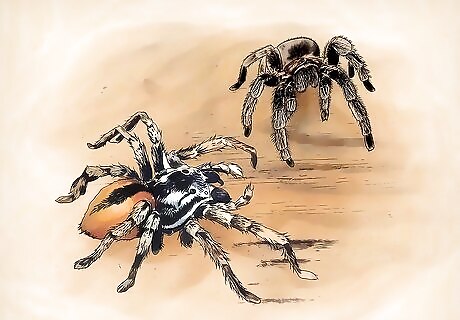
Learn which spiders make good pets. It is important to make sure that you choose a spider that suits your needs. For example, do you want a non-venomous spider? Do you want a large spider? Ask yourself these types of questions. You also want to choose a spider that will do well in captivity. While not all spiders make good pets, these spiders are ones to consider: Tarantulas Wolf spiders Jumping spiders Fishing spiders Grass spiders

Purchase a spider. Consider buying a spider to keep as a pet. This option allows you to get the exact species that you want. You'll also be able to ask the seller for information on how to care for your new pet. You can purchase many types of spiders at pet stores. Tarantulas are a very popular option. Not all species of tarantulas are suitable for beginner keepers. Some are higher maintenance than others, and some are more likely to bite than others. There are also many reputable online sellers. Just make sure to specify whether you are planning to breed your spider(s), and how old you want it to be. If you live with your parents or roommates, make sure that everyone in the household agrees to house the spider.
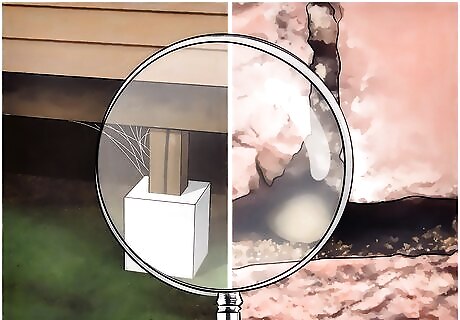
Hunt for spiders. You can also choose to skip the store and catch a spider in the wild. Just make sure to do your research first. You should make sure that you know how to identify the different spiders that live in your area. You also want to be certain that you know how to handle the spider you catch. Note that spiders can be infested with parasites, so catching a wild spider might not be the best option. You can look for house spiders and widow spiders in and around your house. Check windowsills and cracks in walls or windows. Jumping spiders make interesting pets. Look for them in the grass and bushes. A great way to find spiders is to look for their webs.
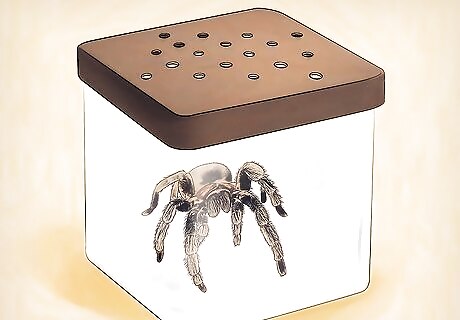
Capture a spider. When you go looking for spiders, take a glass jar with you. Make sure that your jar has a lid. You should also poke holes in the lid to make sure that your spider will have air on the way to its new home. Have an adult help you with this, as you'll need to use a sharp tool. If you see a spider hanging out on a plant, you can place your jar under the spider. Gently move the leaf or branch so that the spider will drop into the jar. You should also carry a card or stiff piece of paper with you. You can use this to scoop a spider off the ground and gently place it in your jar.
Creating a Habitat
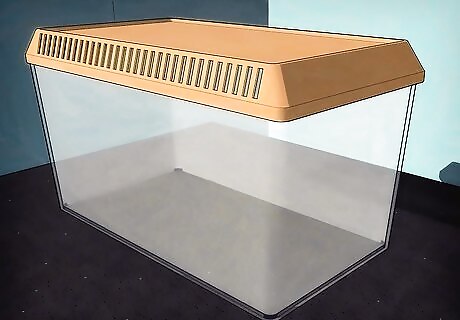
Buy a cage. One of the most important parts of keeping a spider as a pet is making sure that it has a safe, comfortable home. You can purchase a ready-made habitat for your spider. An aquarium that you can buy at a pet store will work just fine. Make sure that the cage is at least 2-3 times the spider's leg span. This will ensure that it has plenty of room to move around. If you have a ground-dwelling tarantula, make sure that the cage is not too tall, as the spider could fall from the ceiling, which could be fatal to the spider. Add materials to make your spider feel at home. You can place leaves, dirt, and rocks in the cage. Spiders also like to have somewhere to hide. If you have a large enough cage, you can place a small flower pot on its side in the cage. You could use a piece of wood, too.

Make your own cage. If you are capturing a small spider, you might want to consider a homemade cage for your spider. You can use a glass jar. If you have a big, gallon size jar, that would be great. Ask a local restaurant if you can have one of their empty jars. Make sure to thoroughly clean the jar. Rinse it with water and mild soap and then dry with a clean cloth. You can add the same materials to your jar that you would add to an aquarium. You can also consider adding peat or moss to make a comfortable floor for your spider. Remember that air flow is important. Poke holes in the lid of the jar to make sure that your spider is getting enough air.

Choose the right spot. Picking a good spot for your spider's new home is important. You want to make sure that it will be safe. Choose a stable surface such as a table or counter. You don't want your spider to accidentally get knocked to the floor. Make sure that household pets or young children won't be able to accidentally set your spider free. Most pet spiders, such as tarantulas, don't need special heating or light. The natural light in a room will be enough. Just make sure they don't get much colder than 70 degrees.
Caring for Your Spider
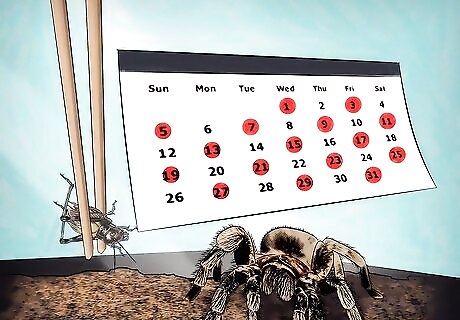
Feed your spider. You can feed your spider insects. Try not to overfeed your spider as they are at a larger risk of an abdomen burst should they fall from a distance. Make sure to feed spiders about once or twice a week. If the spider's abdomen becomes crumpled, feed immediately. You can hunt for your own bugs to feed your pets. Just make sure they come from an area without pesticides. You can also purchase insects at most pet stores. Stock up on a supply of crickets to feed your spider. Make sure to firmly seal the tank (or jar) after feeding your pet. Spiders (especially tarantulas) are great at escaping.
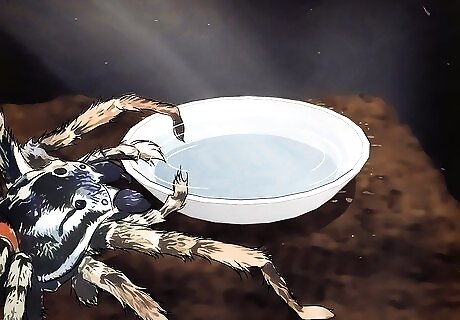
Provide water. In addition to food, you need to provide fresh water for your spider. You can use a plastic bottle cap as a water bowl if you have a small spider in a small cage. If you have room, give your spider a small bowl of water. Spiders will also drink the water off of damp webbing. But you need to make sure that your cage doesn't become damp. Spiders do not thrive in humidity. Refill your spider's water every couple of days, or more frequently, if you notice it is empty.

Handle your spider carefully. If your spider is small and fragile, you should avoid handling it. But if you have a sturdier spider, such as a tarantula, you can hold it. Just remember to be careful and handle your spider properly. Carefully pick up your tarantula by the leg between your second and third fingers. Place it in the palm of your hand. It is not a good idea to let your tarantula crawl all over your body--you might lose it. Tarantulas do not need to be handled. Try to handle your pet as little as necessary.
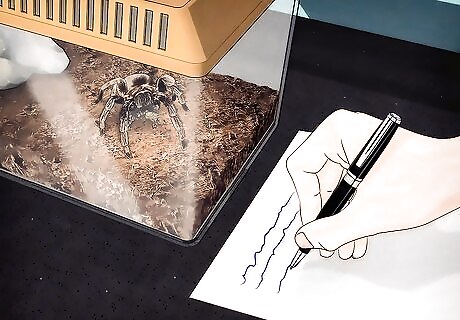
Observe your pet. Spiders are really interesting creatures. You can keep an eye on your spider so that you can get to know it better. Keep track of what it most likes to eat, when he likes to sleep, and when he is active. Try keeping a notebook near your spider's cage. You can record its habits.




















Comments
0 comment